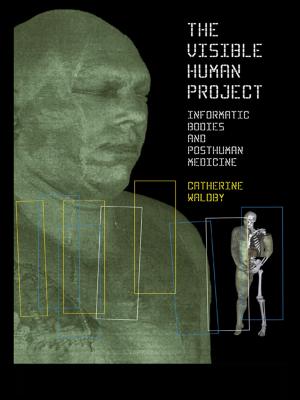The Making of Détente
Eastern Europe and Western Europe in the Cold War, 1965-75
Nonfiction, History, Military, Other| Author: | ISBN: | 9781134075072 | |
| Publisher: | Taylor and Francis | Publication: | April 5, 2010 |
| Imprint: | Routledge | Language: | English |
| Author: | |
| ISBN: | 9781134075072 |
| Publisher: | Taylor and Francis |
| Publication: | April 5, 2010 |
| Imprint: | Routledge |
| Language: | English |
Containing essays by leading Cold War scholars, such as Wilfried Loth, Geir Lundestad and Seppo Hentilä, this volume offers a broad-ranging examination of the history of détente in the Cold War.
The ten years from 1965 to 1975 marked a deep transformation of the bipolar international system of the Cold War. The Vietnam War and the Prague Spring showed the limits of the two superpowers, who were constrained to embark on a wide-ranging détente policy, which culminated with the SALT agreements of 1972. At the same time this very détente opened new venues for the European countries: French policy towards the USSR and the German Ostpolitik being the most evident cases in point. For the first time since the 1950s, Western Europe began to participate in the shaping of the Cold War. The same could not be said of Eastern Europe, but ferments began to establish themselves there which would ultimately lead to the astounding changes of 1989-90: the Prague Spring, the uprisings in Gdansk in 1970 and generally the rise of the dissident movement. That last process being directly linked to the far-reaching event which marked the end of that momentous decade: the Helsinki conference.
The Making of Détente will appeal to students of the Cold War, international history and European contemporary history.
Containing essays by leading Cold War scholars, such as Wilfried Loth, Geir Lundestad and Seppo Hentilä, this volume offers a broad-ranging examination of the history of détente in the Cold War.
The ten years from 1965 to 1975 marked a deep transformation of the bipolar international system of the Cold War. The Vietnam War and the Prague Spring showed the limits of the two superpowers, who were constrained to embark on a wide-ranging détente policy, which culminated with the SALT agreements of 1972. At the same time this very détente opened new venues for the European countries: French policy towards the USSR and the German Ostpolitik being the most evident cases in point. For the first time since the 1950s, Western Europe began to participate in the shaping of the Cold War. The same could not be said of Eastern Europe, but ferments began to establish themselves there which would ultimately lead to the astounding changes of 1989-90: the Prague Spring, the uprisings in Gdansk in 1970 and generally the rise of the dissident movement. That last process being directly linked to the far-reaching event which marked the end of that momentous decade: the Helsinki conference.
The Making of Détente will appeal to students of the Cold War, international history and European contemporary history.















